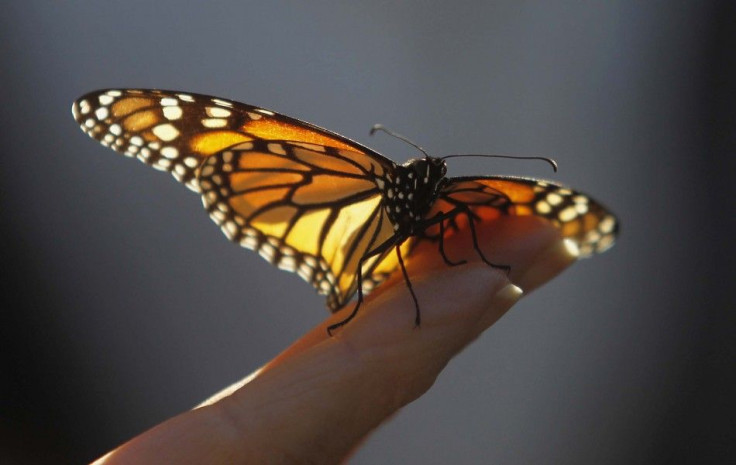Butterflies Deceive Ants Using Chemical Strategies -- New Study

According to a new study, butterflies use a variety of chemical strategies to deceive ants and to protect themselves from the latter's attack. The research was conducted by Yoko Inui and his colleague from Osaka Kyoiku University, Japan.
The press release explains that the larvae of Oakblue butterflies survive on plants that house ants. The specific plant, Macaranga, is an ant plant species and though it has several ants living on it, the larvae are still protected and not destroyed by the ants. The authors began examining the reason for this protection from the ants, known as plant ant species, and the ways by which the Oakblue butterflies protect themselves. They hypothised, “The butterfly larvae may chemically mimic or camouflage themselves and be accepted by the plant-ants on their host plant, and therefore would not be accepted by other plant-ant species living on plants that are not their normal host species.”
To examine the process, the scientists collected butterfly larvae for three Arhopala species in Malaysiaand and began observing the response of the plant ant species when they were introduced to the larvae. The ants were introduced to actual butterfly larvae and larval dummies treated with cuticular hydrocarbon extract found on the leaves of the Macaranga species.
The ant friendly plants are well protected by the herbivorous attack of the ants. The cuticular hydrocarbons found in them play a vital role in insect communication, the press release states. They found that the ants’ response to butterfly larvae varied considerably and was dependent on the butterfly species. However, the attacks by the plant ant species on the normal plant host was very limited.
They found that the larvae, A. dajagaka, had cuticular chemicals that matched well the host plan ants whereas A. amphimuta did not match at all. Meanwhile, the last one, A. zylda, lacked hydrocarbons and did not match as well. Those larvae dummies coated with the chemicals of A. dajagaka were not harmed by the plant host ants and even the non host ants. A. amphimuta coated ants were attacked by the non host plant ants and the third one, A. zylda, was completely ignored by the ants - both host and non host alike. The study concluded that gossamer-winged butterflies use chemical strategies to avoid the attacks by the plant ant colonies.
The study is published in the journal PLOS ONE.
For comments/questions regarding the article, you may email the writer at samrichardson.ibtimes@gmail.com.




















